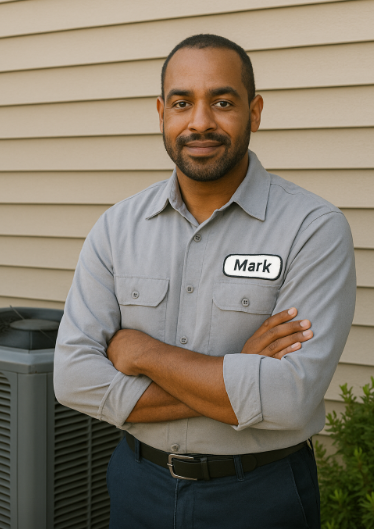Let’s be honest: HVAC systems aren’t exactly exciting dinner table talk—but they sure become the center of attention when the system breaks in the middle of a heatwave or cold snap.
As someone who's been in this industry for more than 30 years, I can tell you this: one of the most common sources of confusion for homeowners is understanding heat pump package units, especially when trying to size between a 2 ton or 4 ton unit. So let’s cut through the noise and give you a clear, no-fluff breakdown of how to make the right choice.
What Is a Heat Pump Package Unit?
A heat pump package unit is a self-contained system that provides both heating and cooling. Unlike split systems that have indoor and outdoor components, package units consolidate everything into one compact cabinet that’s installed outdoors—typically on the ground or rooftop.
These systems are popular for mobile homes, small commercial spaces, and residential homes where interior space is limited.
If you're looking for versatility, energy efficiency, and space-saving benefits, a package unit might be exactly what your home or building needs.
What Does “Ton” Mean in HVAC?
No, it has nothing to do with weight. In HVAC lingo, a ton refers to the unit's cooling capacity. One ton equals 12,000 BTUs per hour. So, a:
-
2 ton heat pump package unit = 24,000 BTUs/hour
-
4 ton heat pump package = 48,000 BTUs/hour
The tonnage you need depends on several factors: square footage, insulation, climate zone, and even ceiling height.
A 2 ton unit generally serves homes around 1,000–1,200 sq ft, while a 4 ton package unit heat pump can handle 2,000–2,400 sq ft comfortably.
When to Choose a 2 Ton Heat Pump Package Unit
If you live in a smaller home, mobile home, or even an apartment-style setup, a 2 ton heat pump package unit may be more than enough. These systems are ideal for:
-
Compact floor plans
-
Warmer climates where heating demand is minimal
-
Energy-conscious homeowners
One solid model worth checking out is the MRCOOL 2 Ton 14 SEER Heat Pump Package Unit, which balances affordability and reliability. It’s a favorite for budget-conscious installs where space efficiency matters.
Why You Might Need a 4 Ton Package Unit Heat Pump
If you’ve got a larger house, multiple zones, or you're located in an area with significant heating and cooling demands, upgrading to a 4 ton heat pump package might be your best bet.
A 4 ton system is great for:
-
Multi-story homes
-
Open-concept layouts
-
Homes with additions or finished basements
Looking for a top-tier model? The Goodman 4 Ton 14 SEER Packaged Heat Pump is a dependable choice. It includes R-410A refrigerant, a high-efficiency compressor, and horizontal airflow, making it a strong performer in both warm and cold months.
SEER Ratings: Why They Matter in 2025
If you're looking at any HVAC equipment, you’ll see SEER ratings thrown around a lot. SEER stands for Seasonal Energy Efficiency Ratio. The higher the SEER, the more energy-efficient the unit.
The latest minimum is 14.3 SEER2 in most regions, and the Goodman 3 Ton bundle at The Furnace Outlet exceeds that at 14.5 SEER2. It's an excellent middle-ground option for many households, and it uses R-32 refrigerant, which has a lower global warming potential (GWP) than R-410A.
Heat Pump Package Units vs. Split Systems
Here’s how they compare:
| Feature | Package Unit | Split System |
|---|---|---|
| Space Needed | Outdoor only | Indoor + Outdoor |
| Installation Cost | Generally Lower | Typically Higher |
| Maintenance | Easier access, faster service | Split components may complicate repair |
| Appearance | Larger outdoor box | Less conspicuous |
In some retrofit projects or smaller lots, a packaged unit is not just a convenience—it's a necessity.
Heat Pump Installation Tips
Whether you’re eyeing a 2 ton or a 4 ton heat pump package, installation is where things can go sideways quickly if you don’t hire the right technician.
A licensed HVAC pro should:
-
Run a Manual J Load Calculation to size your unit correctly
-
Verify that your existing ductwork supports the system’s airflow
-
Ensure the outdoor platform is leveled and reinforced
-
Seal all ductwork properly to avoid energy loss
Pro tip: Don’t guess. Always consult an HVAC load calculator or professional installer before buying.
The R-22 Factor: Why Older Units Need Replacing
Some 2 ton systems still use R-22 refrigerant, especially in older homes. That’s a red flag.
R-22 was phased out due to environmental regulations, and it’s now expensive and hard to find. If you’re replacing a legacy 2 ton R-22 compressor, it’s time to look at modern alternatives with R-32 or R-410A refrigerants.
If you’re not sure what refrigerant your system uses, check the outdoor unit nameplate or call a local HVAC tech.
Here’s a good breakdown from Energy Vanguard on what to do if your system still runs on R-22.
Financing and Rebates
Incentives make upgrading easier. Many local utility companies offer rebates for high-efficiency heat pump package units. Also, federal tax credits are available under the Inflation Reduction Act of 2022 for eligible systems.
You can track current HVAC rebates via the ENERGY STAR Rebate Finder.
Final Thoughts from Mark
The difference between a 2 ton and 4 ton heat pump package unit isn’t just about square footage. It’s about comfort, efficiency, long-term savings, and reliability. Whether you’re upgrading an aging R-22 system or building a new home, it pays to invest wisely.
One product worth exploring is the Goodman 3 Ton 14.5 SEER2 R-32 System. It offers a great balance of size, performance, and refrigerant sustainability—and it’s ideal for many average-sized homes.
If you’re still unsure about sizing, or want help comparing models, feel free to reach out. I’ve worked with homeowners from Alaska to Florida—and trust me, there’s always a right-size solution when you know where to look.







